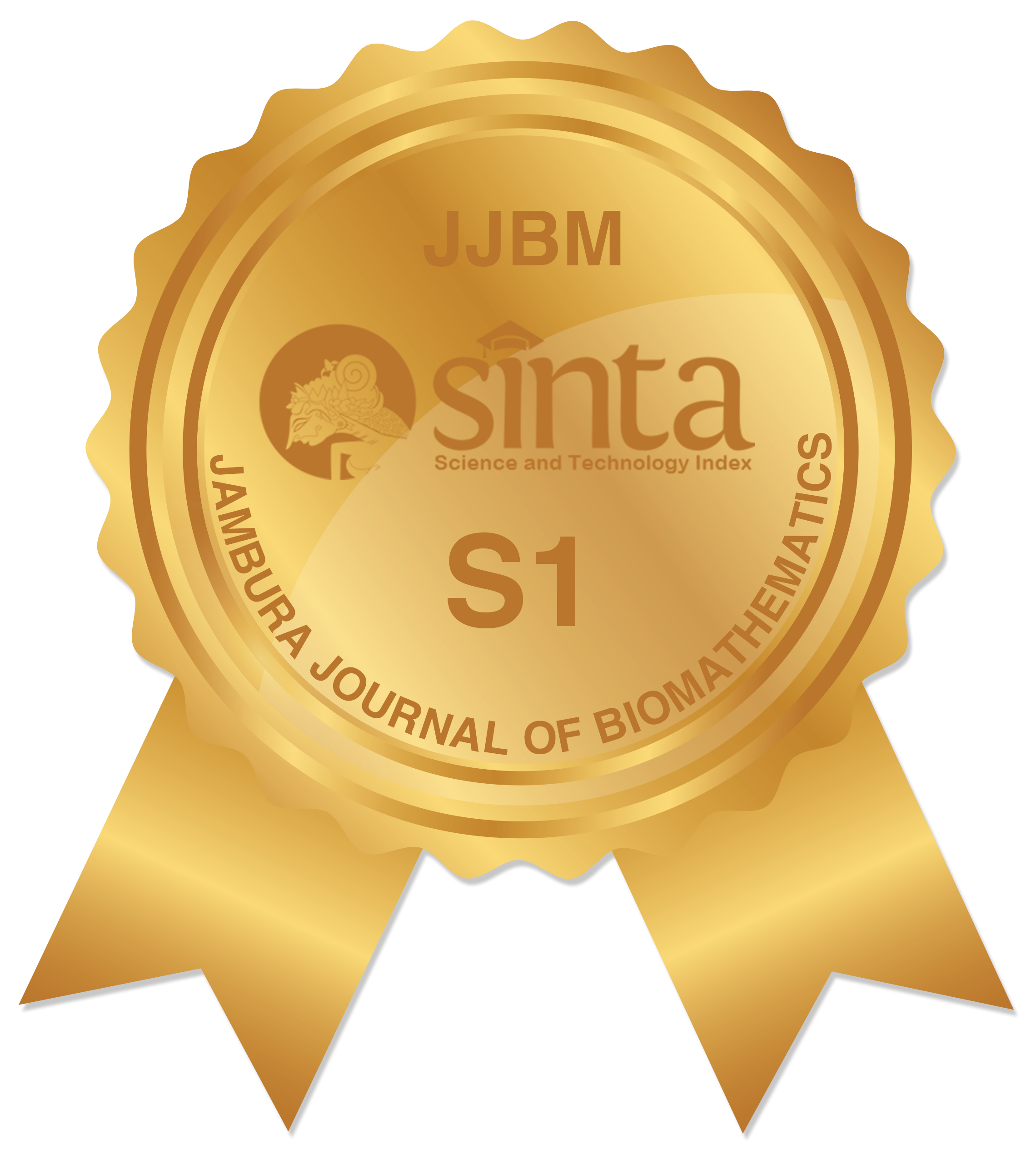Estimasi Reproduction Number Model Matematika Penyebaran Malaria di Sumba Tengah, Indonesia
Abstract
Keywords
Full Text:
PDF [Indonesia]References
Kemenkes-RI, Profil Kesehatan Indonesia tahun 2015. Jakarta: Ditjen P2P, Kemenkes RI, 2016.
M. Z. Ndii, Pemodelan Matematika Dinamika Populasi Dan Penyebaran Penyakit Teori, Aplikasi, Dan Numerik. Deepublish, 2018.
Fatmawati dan H. Tasman, "An optimal control strategy to reduce the spread of malaria resistance" Mathematical Biosciences, vol. 262, hal. 73-79, 2015.
B. D. Handari, F. Vitra, R. Ahya, T. Nadya S., dan D. Aldila, "Optimal control in a malaria model: intervention of fumigation and bed nets" Advances in Difference Equations, vol. 2019, no. 1, hal. 497, 2019.
D. Aldila, "Understanding the effects of vector-bias in the success of biolarvicides interventions for malaria prevention" AIP Conference Proceedings, vol. 2264, no. 1, hal. 20010, 2020.
S. O. S. P. Ahaya, E. Rahmi, dan N. Nurwan, "Analisis dinamik model SVEIR pada penyebaran penyakit campak" Jambura Journal of Biomathematics, vol. 1, no. 2, hal. 57-64, 2020.
A. F. D. Hubu, N. Achmad, dan N. Nurwan, "Model matematika SMEIUR pada penyebaran penyakit campak dengan faktor pengobatan" Jambura Journal of Biomathematics, vol. 1, no. 2, hal. 71-80, 2020.
R. Resmawan, "Efektifitas vaksinasi dan pengasapan pada model epidemik transmisi penyakit malaria" Jambura Journal of Mathematics, vol. 1, no. 1, hal. 25-35, 2019.
R. Resmawan dan L. Yahya, "Sensitivity analysis of mathematical model of coronavirus disease (COVID-19) transmission" Cauchy, vol. 6, no. 2, hal. 91-99, 2020.
M. Z. Ndii, P. Hadisoemarto, D. Agustian, dan A. K. Supriatna, "An analysis of Covid-19 transmission in Indonesia and Saudi Arabia, "Communication in Biomathematical Sciences, vol. 3, no. 1, hal. 19-27, 2020.
DOI: https://doi.org/10.34312/jjbm.v2i1.9971
Copyright (c) 2021 E.M. Banni, M.A. Kleden, M. Lobo, M.Z. Ndii

This work is licensed under a Creative Commons Attribution-NonCommercial 4.0 International License.
Jambura Journal of Biomathematics (JJBM) has been indexed by:
EDITORIAL OFFICE OF JAMBURA JOURNAL OF BIOMATHEMATICS |
 | Department of Mathematics, Faculty of Mathematics and Natural Science, Universitas Negeri Gorontalo Jl. Prof. Dr. Ing. B. J. Habibie, Moutong, Tilongkabila, Kabupaten Bone Bolango 96554, Gorontalo, Indonesia |
 | Email: [email protected] |
 | +6281356190818 (WA Only) |
 | Jambura Journal of Biomathematics (JJBM) by Department of Mathematics Universitas Negeri Gorontalo is licensed under a Creative Commons Attribution-NonCommercial 4.0 International License. Powered by Public Knowledge Project OJS. |















